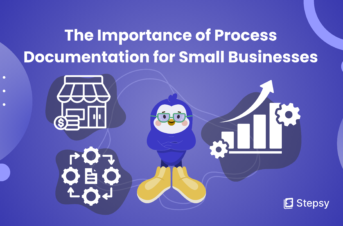Importance of Knowledge Management in Organizations
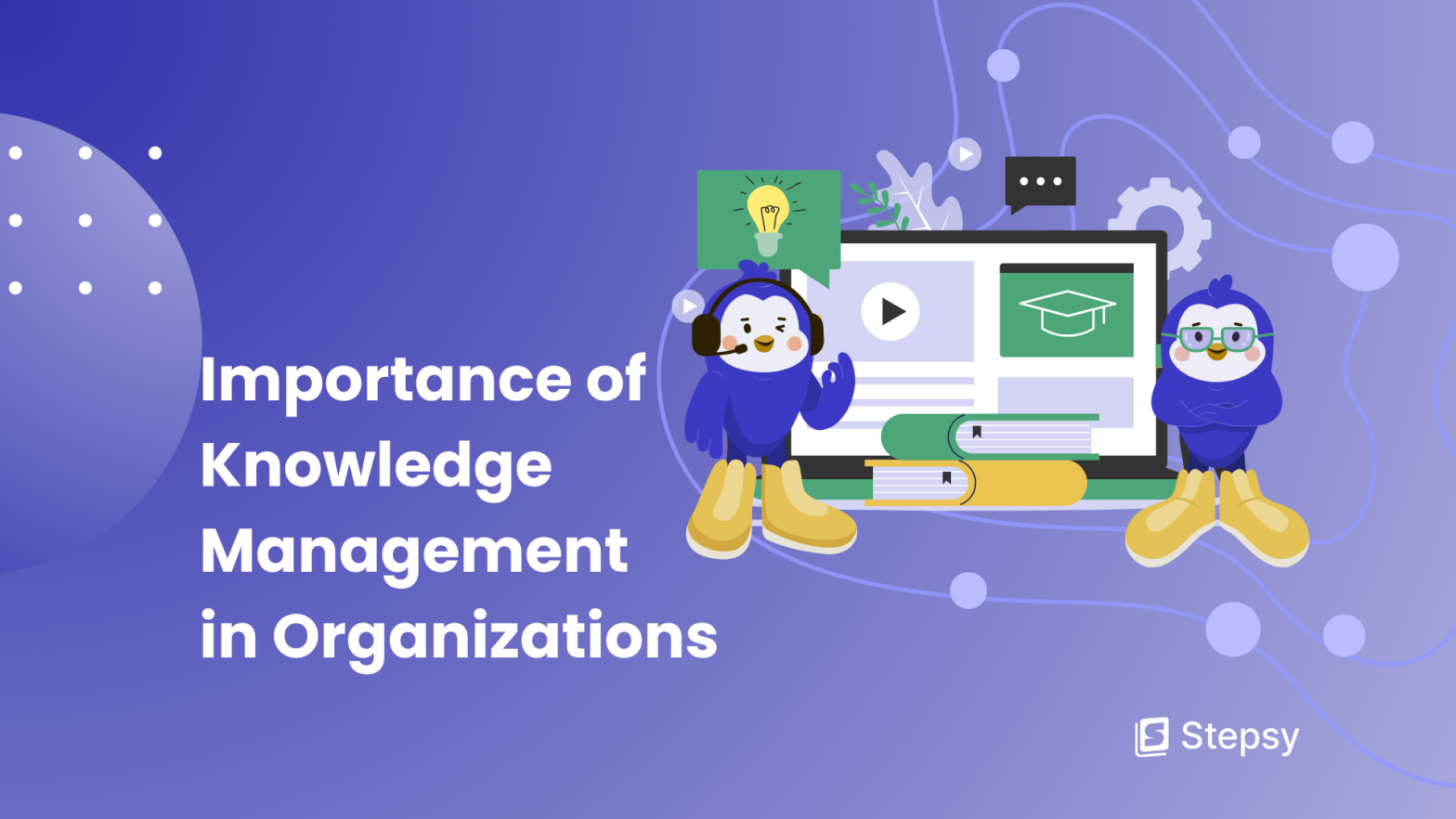
 Iryna Smuk • 24 Jul 2024
Iryna Smuk • 24 Jul 2024
In simpler terms, the purpose of knowledge management is to ensure the right information and knowledge are readily available to the right people at the right time. An effective knowledge management strategy empowers employees, promotes innovation, and propels organizational success.
Research and Markets forecasts that the global knowledge management market will reach $1.1 trillion by 2026.
Are you ready to discover the secrets of creating a successful knowledge management system, its benefits, challenges, and future trends? Then, follow this article.
Benefits of Knowledge Management
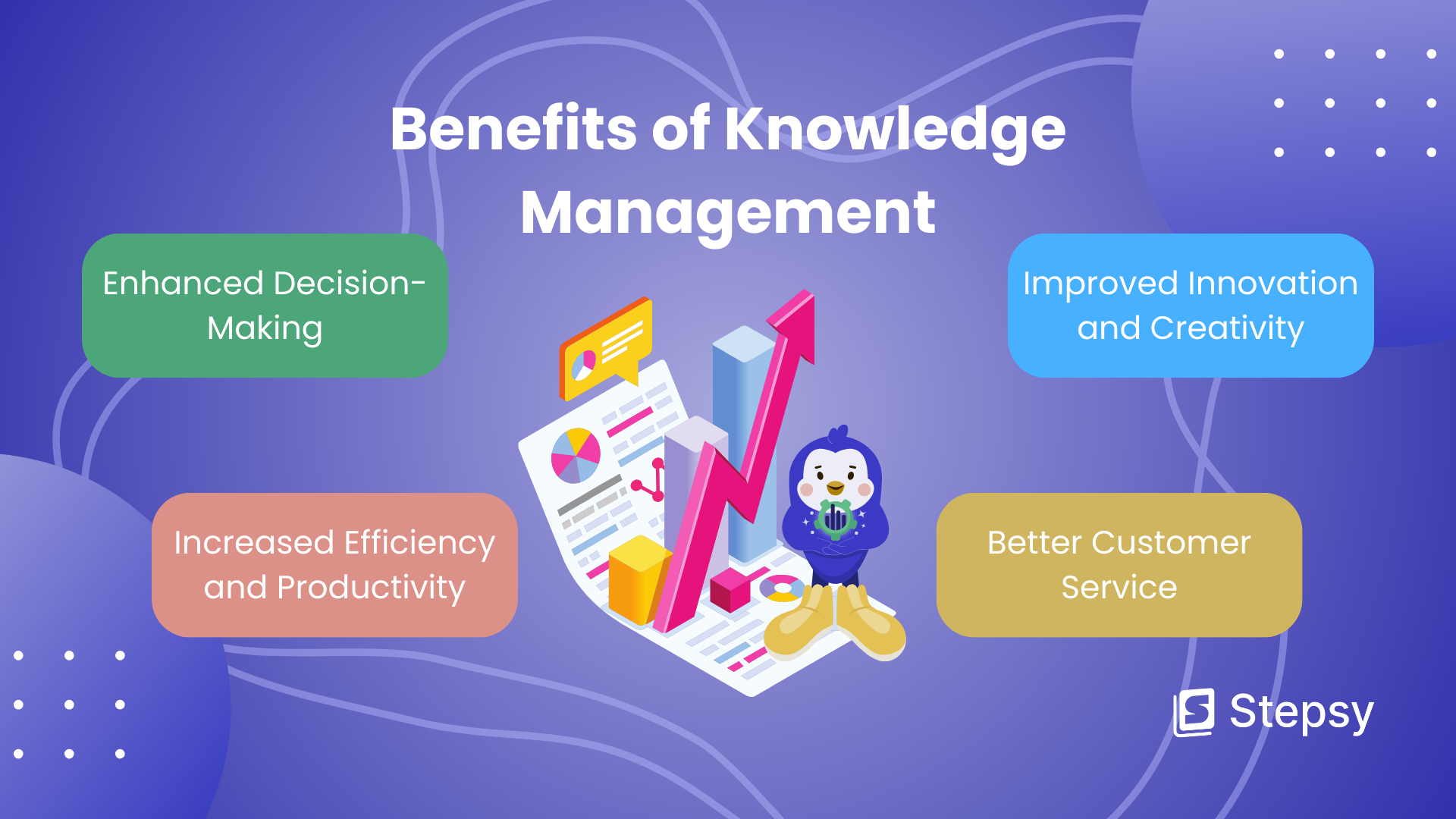
Enhanced Decision-Making
One of the key benefits of knowledge management techniques in your business is its impact on decision-making. As organizations need to make quick and informed choices, KM provides employees with all the necessary resources to navigate complex situations confidently.
Right knowledge management systems organize and store valuable knowledge and information in a structured manner. This way, it is easier for team members to access relevant information when required. As a result, the decision-maker finds answers to pressing questions quickly without spending time on information retrieval. Plus, KM systems often incorporate best practices and lessons learned from past projects.
Increased Efficiency and Productivity
We all know that in the quest for operational excellence, organizations continually seek ways to streamline processes and boost productivity. Knowledge management helps in this endeavor.
Since KM creates a centralized repository of knowledge — a single source of truth, where employees can quickly find the information, tools, and resources they need — it allows workers to access any type of knowledge on demand.
Improved Innovation and Creativity
Knowledge management is also known as a catalyst for creativity and breakthrough ideas. When you have an effective knowledge management system, your employees can contribute and access a diverse array of insights, experiences, and skills. Novel solutions are more likely to emerge in an environment where workers are encouraged to share their expertise and knowledge openly.
Furthermore, KM supports the documentation and dissemination of successful innovation practices. Such a system ensures that these best practices are available for future projects.
Better Customer Service
As we live in a customer-centric business environment, delivering exceptional customer service is a top priority for entire organizations. But why is knowledge management important for this? Effective knowledge management enables faster response times and better solutions to customer inquiries and issues.
When a customer reaches out with a question or problem, representatives can swiftly retrieve relevant information from a centralized knowledge base. It can house troubleshooting guides, product manuals, and FAQs.
Plus, KM also facilitates the creation of such a base that customers can access independently.
According to a recent Social Media Today report, 70% of customers prefer to get answers to their questions on a company’s website, rather than by phone or email.
Key Components of an Effective Knowledge Management System
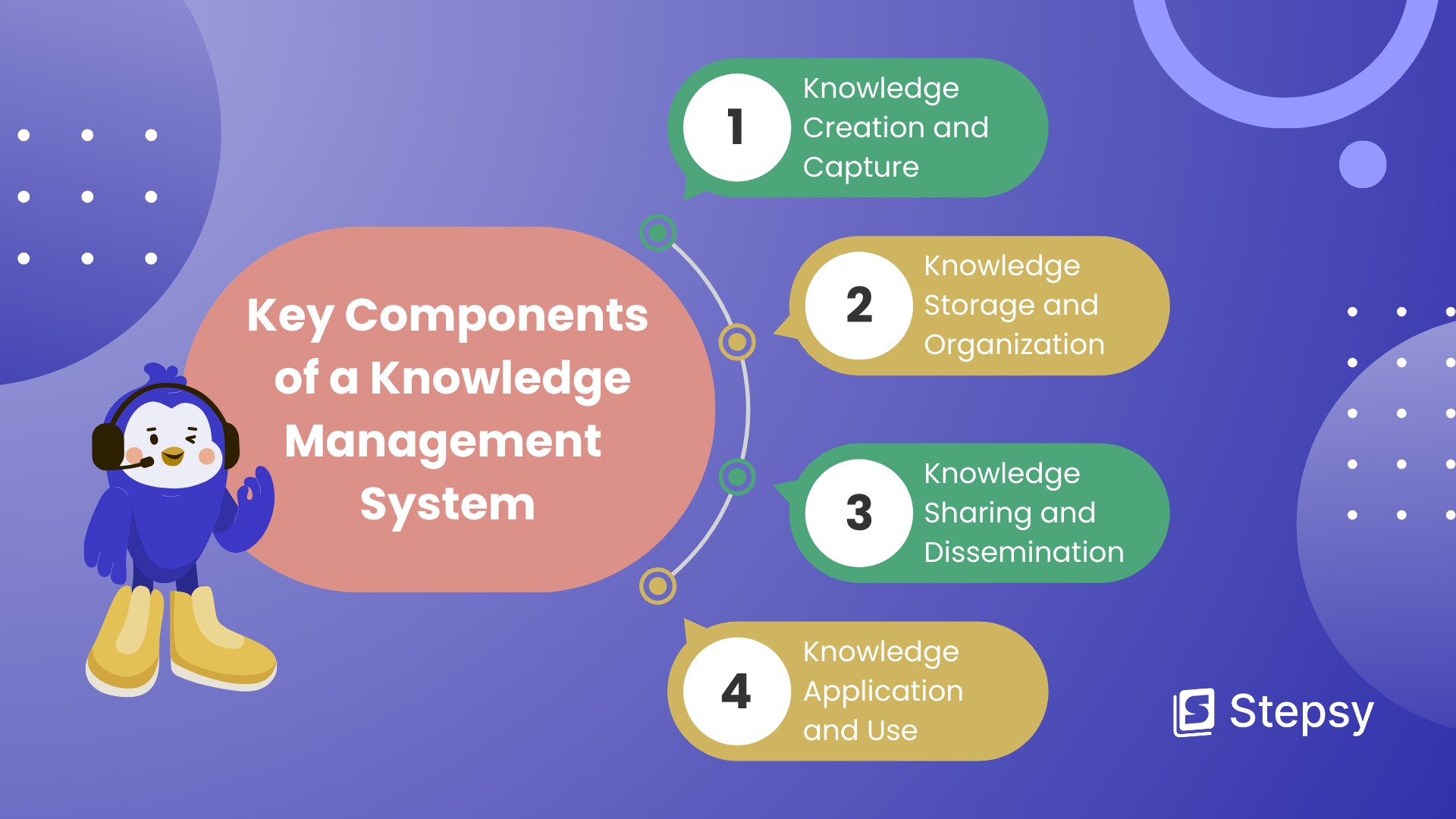
Knowledge Creation and Capture
Effective KM goes beyond simply storing available knowledge. It actively promotes the creation and capture of new knowledge across the organization. Identify all the sources of knowledge within your organization.
Here are some processes and tools that can help in creating new knowledge:
- Collaboration Tools: This enables teams to collaborate, brainstorm ideas, and develop innovative solutions in real-time.
- Workshops and Brainstorming Sessions: Structured sessions where employees come together to discuss challenges and opportunities can lead to the generation of new knowledge.
- Research and Development: By conducting experiments, analyzing trends, and exploring new technologies, organizations can develop cutting-edge solutions and stay ahead of the competition.
The following processes and tools can assist in knowledge capture:
- Documentation: Systematically documenting processes, procedures, and lessons learned is important for capturing tacit knowledge (personal know-how) and converting it into explicit knowledge (formalized information). This can include producing manuals, guides, and standard operating procedures (SOPs).
- Surveys and Feedback Forms: Collecting feedback from employees and customers through surveys and feedback forms provides valuable insights that can be captured and analyzed to improve products and services.
- Interviews and Knowledge-Sharing Sessions: Conducting interviews with subject-matter experts and holding regular knowledge-sharing sessions allows companies to capture the implicit knowledge of their employees.
Knowledge Storage and Organization
The next critical step is to store and organize created and captured knowledge effectively. Valuable information should be easily accessible to those who need it and when they need it. Robust knowledge management systems achieve this in the following ways:
- Databases and Content Management Systems (CMS): These systems store and manage large volumes of information in a structured manner.
- Knowledge Bases: It is a specialized repository for storing and managing information for easy retrieval. Those bases are often used in customer support to provide self-service options.
- Taxonomies and Ontologies: A categorization of information with tags, categories, and keywords allows users to navigate the knowledge repository efficiently.
- Advanced Search Capabilities: Implementing robust search functionalities enables employees to quickly find the information they need.
- Version Control Systems: Keeping track of different versions of documents and ensuring that users access the latest knowledge is crucial.
Knowledge Sharing and Dissemination
Knowledge Management is only beneficial if valuable insights and information reach the right people at the right time. Organizational knowledge collection must be actively shared and disseminated.
You can use digital platforms, social networks, workshops, and meetings for this. For example, company intranets and portals provide a structured environment for sharing knowledge and resources. Collaborative software and Learning Management Systems (LMS) facilitate real-time communication and project management. Internal social media platforms allow employees to connect, collaborate, and exchange ideas, while online forums and communities of practice promote peer-to-peer learning and problem-solving.
Furthermore, businesses can regularly publish newsletters and bulletins to keep employees informed about organizational updates, success stories, and new knowledge resources. If your company prefers an informal and dynamic manner for this, internal blogs and wikis are a better option.
Knowledge Application and Use
The primary goal of knowledge management in business is to apply knowledge effectively in practical scenarios to solve problems and improve processes. It should be used to learn from the existing knowledge and experience of employees and apply proven solutions to current challenges. KM systems that integrate with decision support tools provide employees with the data and insights needed to make informed decisions. Moreover, leveraging knowledge captured from process reviews and performance metrics supports continuous improvement initiatives.
It is also beneficial to integrate knowledge management with performance management systems. Organizations should set goals and objectives that encourage the application of captured knowledge. Establish clear metrics to track the impact and conduct after-action reviews for projects and initiatives, focusing on how effectively knowledge was applied.
Challenges in Implementing Knowledge Management
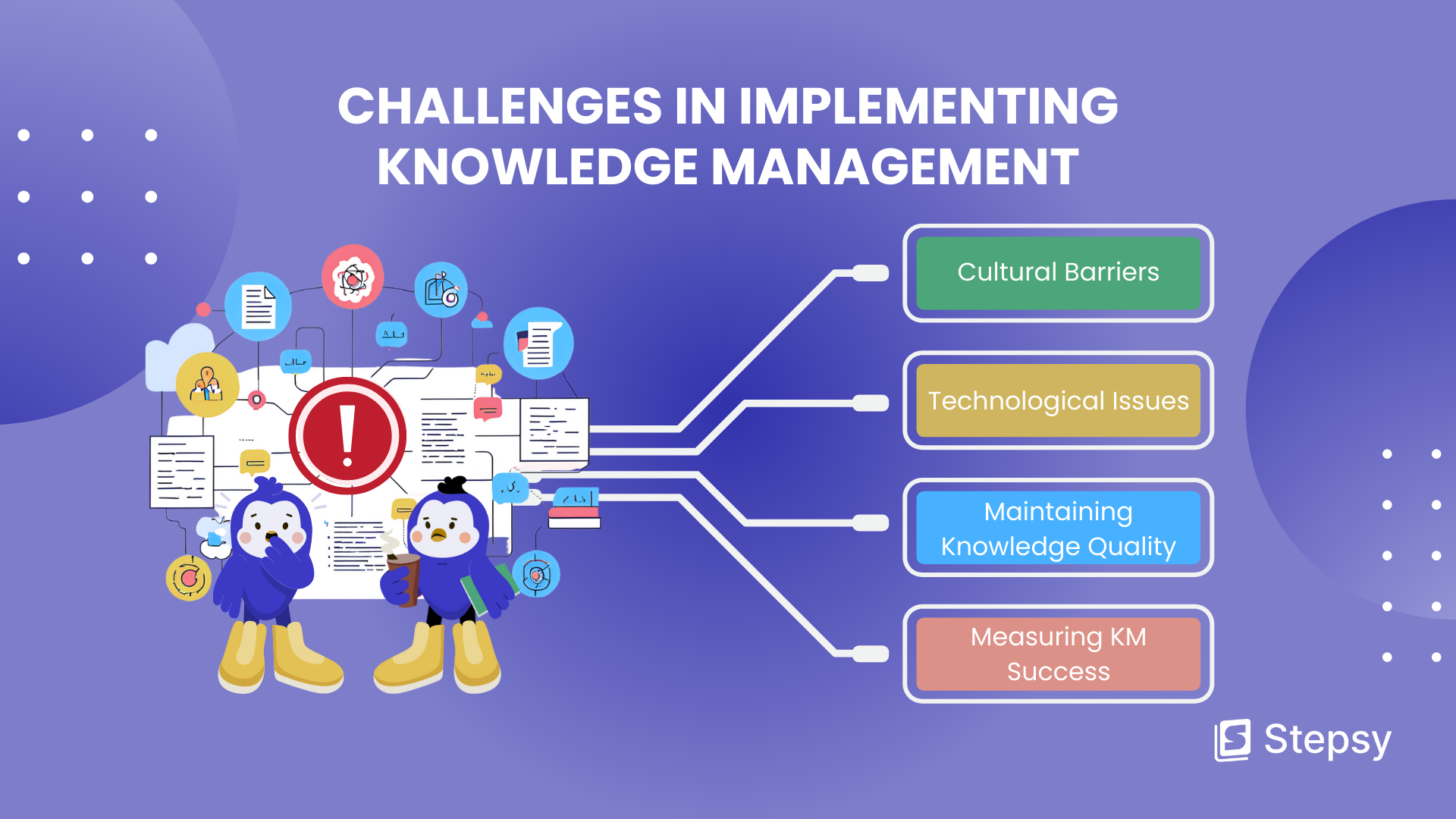
Although the right knowledge management has a lot of potential advantages, organizations frequently run into several obstacles when trying to successfully adopt it. These are a few of the most common challenges:
Strategies for Successful Knowledge Management
Leadership and Governance
Strong leadership is critical for driving KM initiatives. Executives must champion the importance of knowledge as a strategic asset and allocate necessary resources.
A clear governance framework should be established to define roles, responsibilities, and decision-making processes related to KM. On top of that, leadership should also foster a culture of learning and innovation, encouraging employees to contribute to the KM system.
Knowledge Management Tools and Technology
Selecting the right technology and tools is necessary for supporting knowledge management systems. The chosen platform should be user-friendly, scalable, and secure. It should also integrate seamlessly with existing systems to avoid disruptions. Organizations should invest in knowledge management tools that facilitate knowledge capture, storage, sharing, and retrieval.
Stepsy, for example, is an excellent choice for creating step-by-step instructions, SOPs, and manuals with screenshots on every click in your web browser.
This Chrome extension offers features such as an embedded image and text editor, AI-tuned step descriptions and document summaries, and easy sharing via Google Drive.
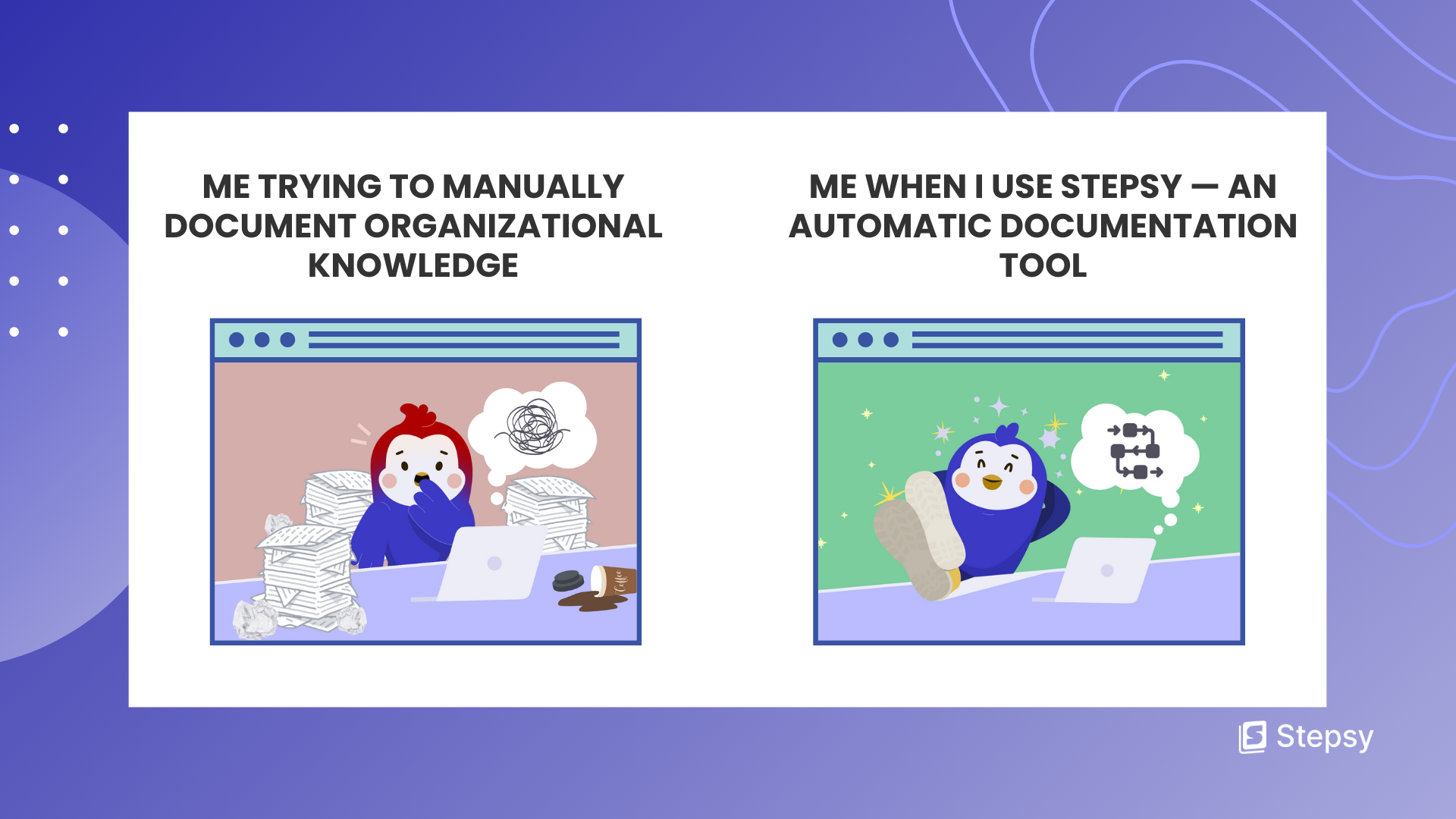
Training and Development
The success of KM isn’t possible without training on how to use KM tools, contribute to knowledge creation, and effectively share information. Complete onboarding programs that introduce new employees to the knowledge management system ensure that employees start with a strong foundation.
Nonetheless, regular training sessions, workshops, and e-learning modules are also helpful for workers to stay updated with new tools, processes, and best practices.
Creating a Knowledge-Sharing Culture
Knowledge-sharing culture in the workplace holds immense potential for the success of any KM initiative. Recognizing and rewarding knowledge contributions can motivate employees to share their expertise.
Creating opportunities for social interaction, such as knowledge cafés or online forums, can facilitate knowledge exchange. Additionally, promoting a culture of open communication and trust is fundamental for breaking down silos and encouraging collaboration.
Future Trends in Knowledge Management
At Stepsy, we are sure that as technology continues to advance, Artificial Intelligence (AI) and Machine Learning (ML) are poised to have a revolutionary impact on knowledge management. These technologies enhance the efficiency and effectiveness of KM systems by automating processes, analyzing vast amounts of data, and providing actionable insights.
Ensuring the security and privacy of sensitive data becomes increasingly important as businesses gather more of it. In the future, even stronger security measures are believed to be incorporated into knowledge management systems to guard against data loss, breaches, and unauthorized access.
Besides, the future of knowledge management platforms involves greater integration with other business processes and systems. This is due to the necessity of making sure that KM is seamlessly embedded into daily operations and decision-making.
Conclusion
Hence, a company’s knowledge management system is like a library, providing a central repository for information that can be easily accessed and shared by employees. If organizations capture, store, share, and apply knowledge effectively, they can enhance decision-making, boost productivity, foster innovation, improve customer service, and ultimately achieve success.
While knowledge management practices offer many potential benefits, implementing them properly often presents some challenges for businesses, such as cultural barriers, technological hurdles, and maintaining knowledge quality. Nevertheless, organizations can overcome these obstacles by implementing various strategic approaches. They involve strong leadership, the right technology, employee training, and knowledge-sharing culture building.
Looking to the future, KM is set to evolve with advancements in Artificial Intelligence and Machine Learning, an increased focus on data security, and deeper integration with other business processes.
The journey to becoming a knowledge-driven organization begins with a single step. Take your first one today!

